October 5, 2023. I stop for a few sips of water, sweat trickling between my shoulder blades. I don’t want to know how red my face is. My husband, Jon, is a few hundred strides ahead of me. He turns and gives me a questioning thumbs up. I wipe my forehead with a sleeve and slowly return the gesture.
It’s in the mid-80s and the sun blazes down from a piercingly blue sky. The trail winds steeply before us, cutting through scrubby, glossy-leaved shrubs, the undergrowth broken by the occasional stand of small oaks.
Behind me, the view of Spain’s Basque countryside is mesmerizing. The small village we lodged in last night is barely visible across a lush, undulating valley. The gentle clatter of bells drifts through the air, and traces of morning mist cling to treetops in the distance.
We’re five miles into a multiday walking tour of Spanish Basque country, and despite the grandeur of our surroundings, all I can think is, What have I gotten us into?
YOUR CHANCE TO RETIRE OVERSEAS NOW
YOUR CHANCE TO RETIRE OVERSEAS NOW
Sign up for our free daily IL Postcards e-letter and we'll immediately send you a free report on the WORLD'S #1 RETIREMENT HAVEN—plus 9 more of the most desirable and very affordable destinations where you can upgrade your retirement right now. Each day you'll learn about the best places to retire, travel, buy real estate and enjoy life overseas.
By submitting your email address, you will receive a free subscription to IL Postcards, Overseas Dream Home, The Untourist Daily and special offers from International Living and our affiliates. You can unsubscribe at any time, and we encourage you to read more about our Privacy Policy.
A Writer’s Inspiration
Five years ago, I visited the mysterious caves of the jaw-dropping Pyrenees monastery of San Juan de la Peña (a two-hour drive from this Basque hilltop). I was on a quest to retrace the steps of my fictional characters in a historical mystery series I set in the area.
A stop on the Camino de Santiago (a network of ancient footpaths which guide spiritual pilgrims to the tomb of St. James in Spain’s Compostela Cathedral), the tenth-century medieval monastery is carved into caves in the base of soaring cliffs; early kings of Aragón are buried in a royal pantheon here.
As I explored the echoing ruins of the once-bustling medieval complex in 2019, I made myself a promise. One day, I’d explore this magnificent region on foot—just as pilgrims along the Camino de Santiago have done for more than a thousand years.
But when I returned home, the discussions I saw on internet Camino forums about how to deal with painful blisters and other challenges of long-distance walking made me wary. As a 50-something traveler, I had no interest in carrying a heavy backpack or sleeping in dorm-style accommodation for weeks on end.
I craved the unique, meditative experience of a multi-day walking adventure. But I didn’t want the tomb of St. James to be my end goal; I wasn’t a spiritual pilgrim. The truth was, I wanted to explore the Pyrenean foothills at my own pace and retrace the steps of my fictional characters in the process. I also wanted lots of rest breaks, fabulous food, and comfortable—maybe even elegant—lodging.
As it turned out, my timing couldn’t have been better. The restrictions of the Covid pandemic ignited a passion for long-distance walking holidays among lots of restless travelers.
By the time I began my search for the perfect walking tour in early 2023, the options seemed nearly limitless…
Whether it’s a trek to Spain’s Compostela through Portugal’s wild landscapes, a group ramble through the beech and oak forests of the Pyrenees, a leisurely stroll through England’s bucolic Cotswolds region, or a hut-to-hut mountain adventure through the Italian Dolomites, there’s a walking tour for everyone.
Finding The Right Place… at the Right Pace
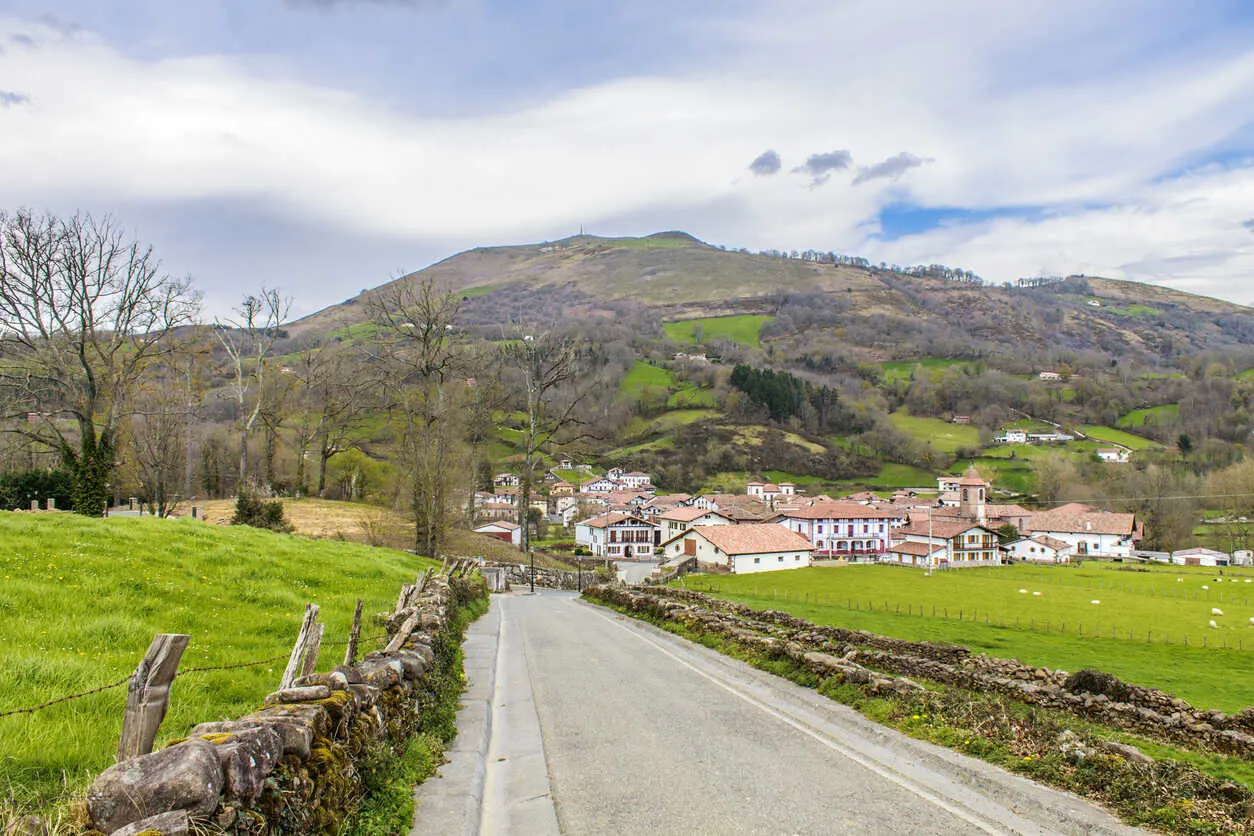
When researching our trip, I combed through websites like AITO — The Specialist Travel Association, a U.K.-based group of more than a hundred highly-rated travel companies. I also turned to experienced walkers for expert advice.
I ultimately chose a tour called "Basque Pyrenees to San Sebastián: The True Heart of Basque Culture," with On Foot Holidays. This was a self-guided 5-night, 4-day itinerary that dips into traditional Camino routes, but mostly follows classic Pyrenees trails such as the GR10, which traverses the mountain chain from east to west.
On our adventure, we’d meet a driver at Biarritz airport in Southwestern France, then travel about an hour to our first accommodation, a bed-and-breakfast in a traditional Basque homestead in the tiny village of Erratzu.
Armed with topographic maps, detailed route notes, and GPS apps, we would walk between nine and 16 miles each day through the oak-studded hills of Basque country to the sea—but ‘shortening options’ offered the flexibility to cut that mileage significantly.
Meanwhile, drivers would transport our luggage from place to place so we’d carry only light daypacks, and an on-call ‘fixer’ named Aznar would help us sort out any challenges along the way.
In a moment, I’ll share the happy ending of this four-day walking tour through Spain’s Basque hills—a challenging and soul-satisfying experience that culminated at the gorgeous seaside food mecca of San Sebastián. And I’ll offer practical tips for choosing a walking holiday and avoiding common challenges, like blisters and overpacking.
But first, you’ll hear from seasoned walkers about their own experiences on the Camino and beyond, savoring some of Europe’s most beautiful regions one step at a time…
YOUR CHANCE TO RETIRE OVERSEAS NOW
YOUR CHANCE TO RETIRE OVERSEAS NOW
Sign up for our free daily IL Postcards e-letter and we'll immediately send you a free report on the WORLD'S #1 RETIREMENT HAVEN—plus 9 more of the most desirable and very affordable destinations where you can upgrade your retirement right now. Each day you'll learn about the best places to retire, travel, buy real estate and enjoy life overseas.
By submitting your email address, you will receive a free subscription to IL Postcards, Overseas Dream Home, The Untourist Daily and special offers from International Living and our affiliates. You can unsubscribe at any time, and we encourage you to read more about our Privacy Policy.
The Inside Scoop: Walkers Share Their Favorite European Tours
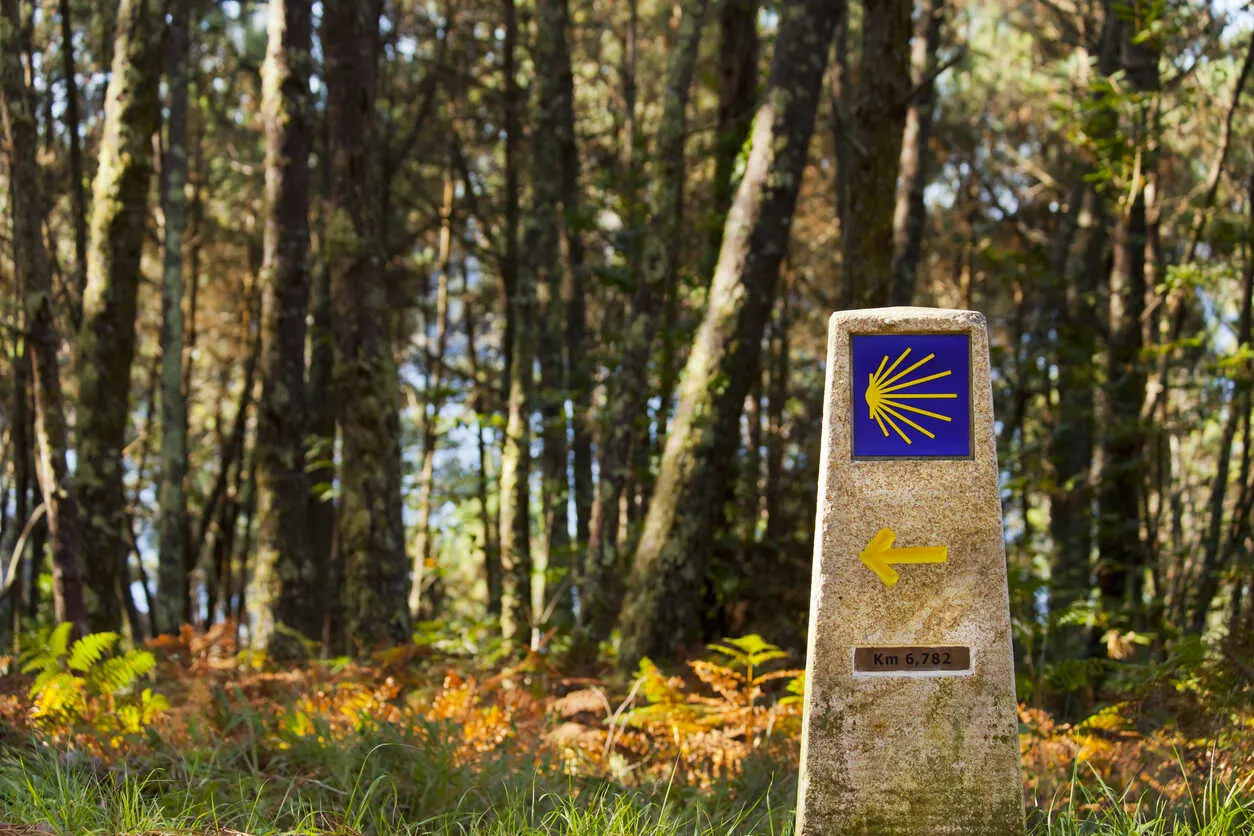
Every seasoned walker I talked to had tips to share about favorite routes, top-notch tour operators, and lessons learned along the trail. One thing they all agreed on: The best times for walking holidays are spring and fall, when weather is typically milder and trails less crowded. This particularly applies to the routes of the Camino de Santiago, which can get very busy and hot in summer.
Going Solo: The "Clarity" Pilgrimage
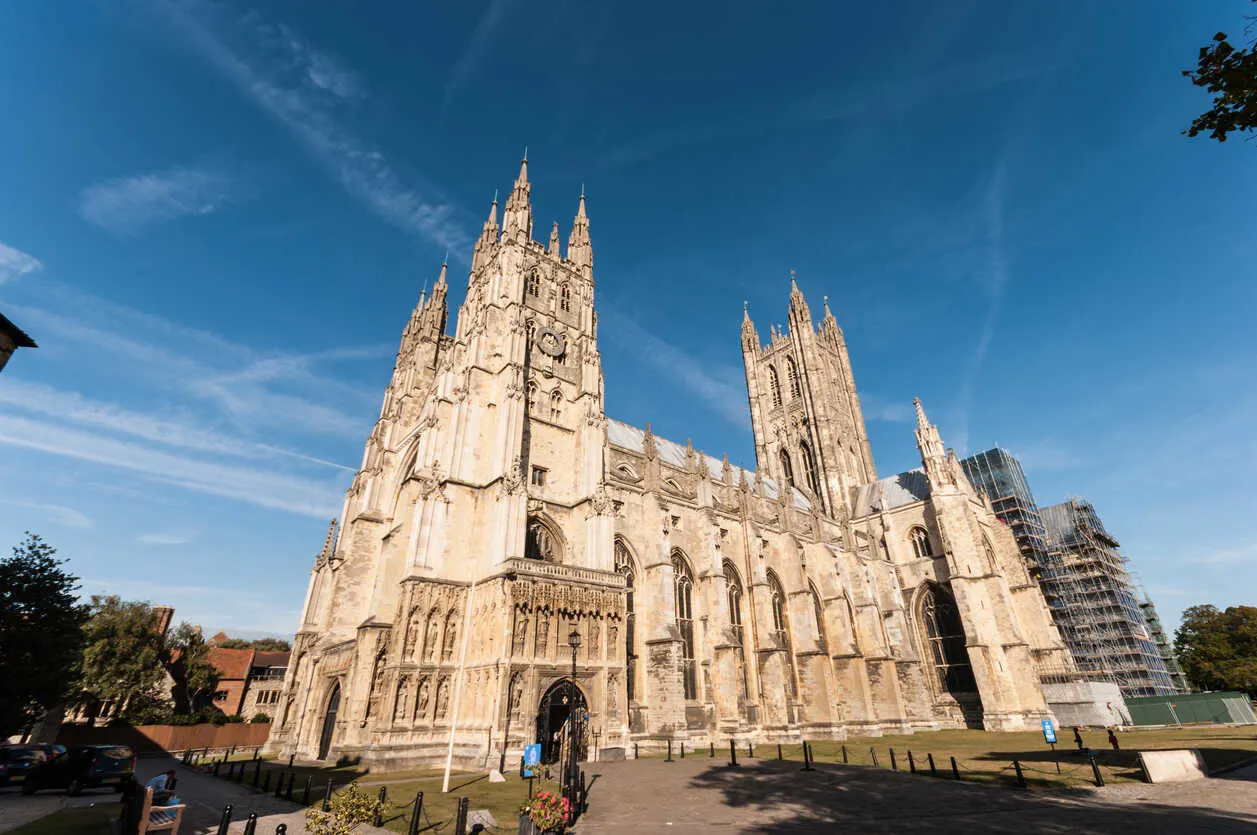
"I started doing pilgrimages during the pandemic because I needed clarity and structure when everything else in my life felt chaotic and uncertain," says USA-Today bestselling thriller author J.F. Penn, a British veteran of three solo pilgrimage walks. "The regular rhythm of wake, walk, eat, sleep became a meditation in motion."
J.F. chose the 90-mile Canterbury Way from London to Canterbury cathedral in Kent as her first solo pilgrimage walk in 2022. Next, she trekked the 62-mile St. Cuthbert’s Way, which begins in Scotland and culminates at Holy Island off the Northumberland Coast of England. For both of the U.K. walks, she booked her own accommodations and used U.K.-based Cicerone guidebooks to plan her routes. She chronicles these walks and a third pilgrimage on the Camino de Santiago from Portugal to Compostela in her memoir Pilgrimage: Lessons Learned from Solo Walking Three Ancient Ways.
J.F., who chose tour operator Macs Adventure for her Portugal adventure, is one of several partnered people I’ve met who prefer to walk solo. She finds the Camino offers the right balance of opportunities for alone time and meet-ups with other pilgrims along the trail. A seven-day, 6-night Macs Adventure ‘Camino Portugués Coastal Way: Stage 1’ trip begins in the city of Porto and includes en-suite accommodation in small hotels, all breakfasts, and baggage transfers; starts at $1035 per person. A four-day, five-night Macs Adventure ‘Highlights of the St. Cuthbert’s Way’ walk along English coastal paths includes en-suite accommodation in small hotels and inns, all breakfasts, and baggage transfers; starts at $725 per person.
Oregon-based futurist and investor April Rinne has visited more than a hundred countries and has hiked in places ranging from Patagonia to Mongolia, usually with her husband or small groups. But like J.F., April prefers to walk the Camino alone.
Since 2022, she has completed three solo pilgrimage walks: the Camino Portugues, Camino del Norte, and Camino Fisterra (which means, in Latin, "end of the earth"). "On the Camino Fisterra, the only Camino that begins in Santiago de Compostela, you’re walking away from the end point. The end is the beginning, and you’re seeing anew," she tells me. "The metaphor is profound."
April says when she discovered the women-owned walking tour company Andaspain, "I never looked back. They are fantastic." A six-night, seven-day Andaspain self-guided ‘Last 100 Miles of the Camino’ tour, which includes accommodation in good quality hotels and inns with private bath, all breakfasts, and luggage transfers, starts at $760 per person; the fully guided version of the tour, which adds all dinners and most lunches, plus English-speaking guides and a private tour of Santiago de Compostela cathedral, starts at $3200 per person.
A Legendary Trail Continues to Gain Popularity
San Juan de la Peña is one of many refuges along the vast network of trails that comprise the ancient routes of the Camino de Santiago, or Way of St. James. Historically, pilgrims walked these routes in groups for safety, starting their journeys all over Europe and North Africa. Wearing black wool cloaks, matching hats, and distinctive scallop shell necklaces, they came from disparate backgrounds, all with a common goal: to worship at the tomb of St. James (Santiago) in the cathedral of Compostela, Spain.
The longest of the routes, the Via de la Plata, stretches more than 600 miles from Seville in Southern Spain to Santiago de Compostela. The most traveled route is the Camino Frances (or French Way), which crosses from France to Spain over the Pyrenees, then meanders through the rolling hills and vast plains of Spain’s Navarra region.
This long-standing tradition has not only endured over the centuries—it has steadily gained popularity. According to Compostela’s Pilgrim Office (which tracks statistics about pilgrims), in 2013 about 150,000 people completed the Camino; in 2023 nearly 450,000 people did. Most are Spanish, but Americans now make up the largest subset of foreigners.
An Opportunity to Reconnect
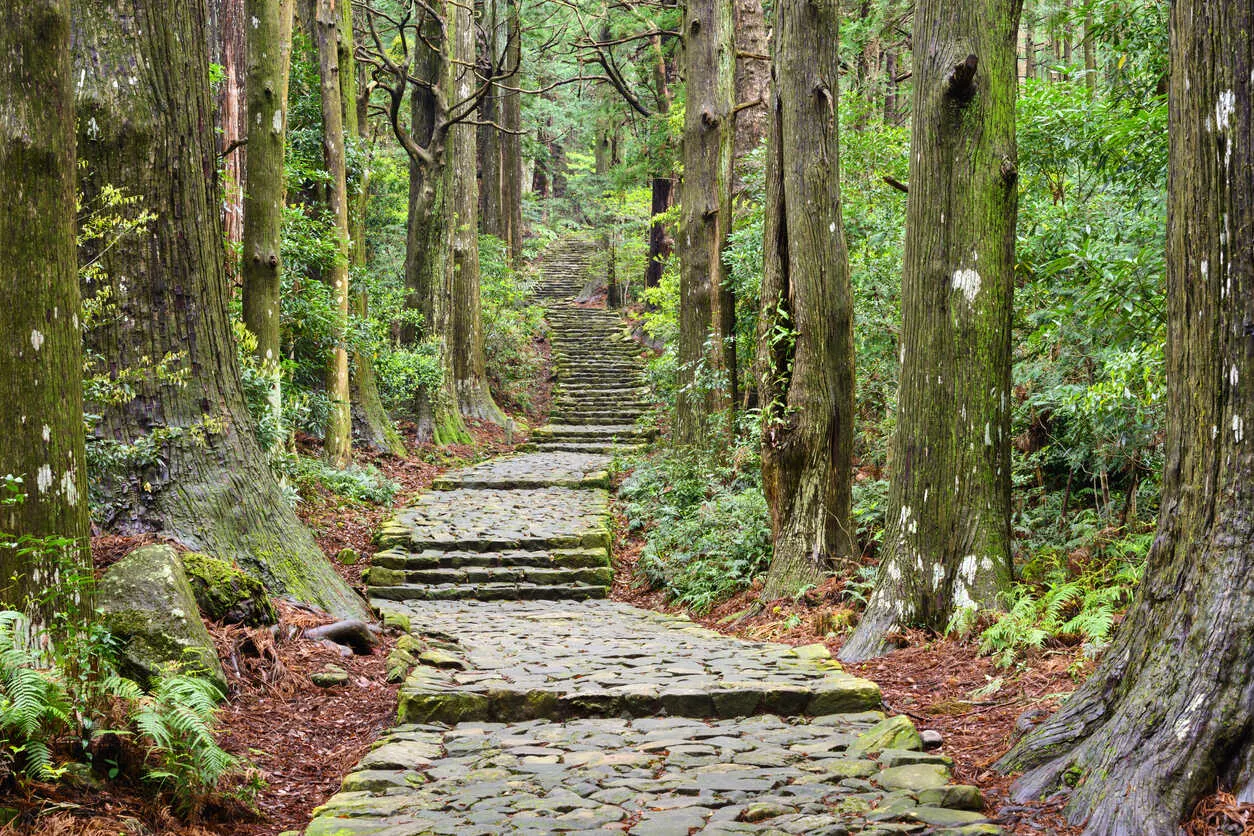
Some people see walking holidays as an opportunity to bring family and friends together. Take Brian Vierra, the Venture Catalyst Director of an economic development NGO in central Oregon. Since 2018, he and his now 83-year-old father, plus various other relatives, have completed six trips all around the world. Two were on the Camino in Portugal and Spain, while the rest spanned the globe: Japan’s Kumano Kodo, Croatia’s Dalmatian Islands, and Ireland’s St. Patrick’s Way among them.
"We took our first trip primarily because it was on my dad’s bucket list and he needed someone to do it with him," Brian tells me. "We did the section of the Camino from Porto to Santiago de Compostela, walking about 150 miles over two weeks. The first group was three of us, and has since grown to six—we are very much ‘the more the merrier.’"
Rather than use a tour operator, the group hires a driver to transfer luggage, and Brian chooses unique, higher-end accommodations himself, including castles and renovated manor homes.
Of all the walking trips he’s taken, Brian says Spain stands out. "The quality of the food and accommodation is amazing, the style of walking suits us, and the Camino doesn’t need to be customized or improvised too much. People do tend to wander off in their own directions—it’s kind of every man for himself some days."
"Make sure you understand the profile of the day’s walk," he advises. "Elevation gains or rough paths can be challenging, and with my dad I need to map out transfers or diversions to make it easier. Also, bring a good first aid kit."
Reconnecting after a long day’s walking—while enjoying Spanish cuisine and fine local wines—is one of the great joys of these trips for Brian and his family.
Blending a Walking Tour With Other Travel
For some, a walking tour will consume their entire European vacation. For others, integrating the walk with other travel is preferable or necessary. Take John Kennedy and Dawn Bolgioni, a couple whose first taste of long-distance walking was during a late-1990s ramble along the 100-mile Cotswolds Way in England—long before kids, a mortgage, and the daily realities of running a wine shop in Portland, Oregon.
Through the years, they dreamed of taking another walking holiday. The couple made it happen nearly two decades later by combining a Spanish-immersion homestay in San Sebastián for the kids with a four-day grownups-only stint on the Camino through the heart of Navarra’s Rioja wine region.
After dropping off the kids, the couple took a one-hour bus journey to Pamplona, then walked the Camino to Logroño, the capital of the Rioja wine region. Once in Logroño, they rented a car and explored the region, tasting wine along the way.
"It was the lure of Rioja that helped us pick our route," John tells me. "The walk was challenging because of the summertime heat, but it was also restorative. Long-distance walking strips all the daily noise out of your world for a while. You don’t have to accomplish anything besides getting to your next destination. It’s a great reset."
Hut-to-Hut Hiking: A Challenge for Fitness Buffs
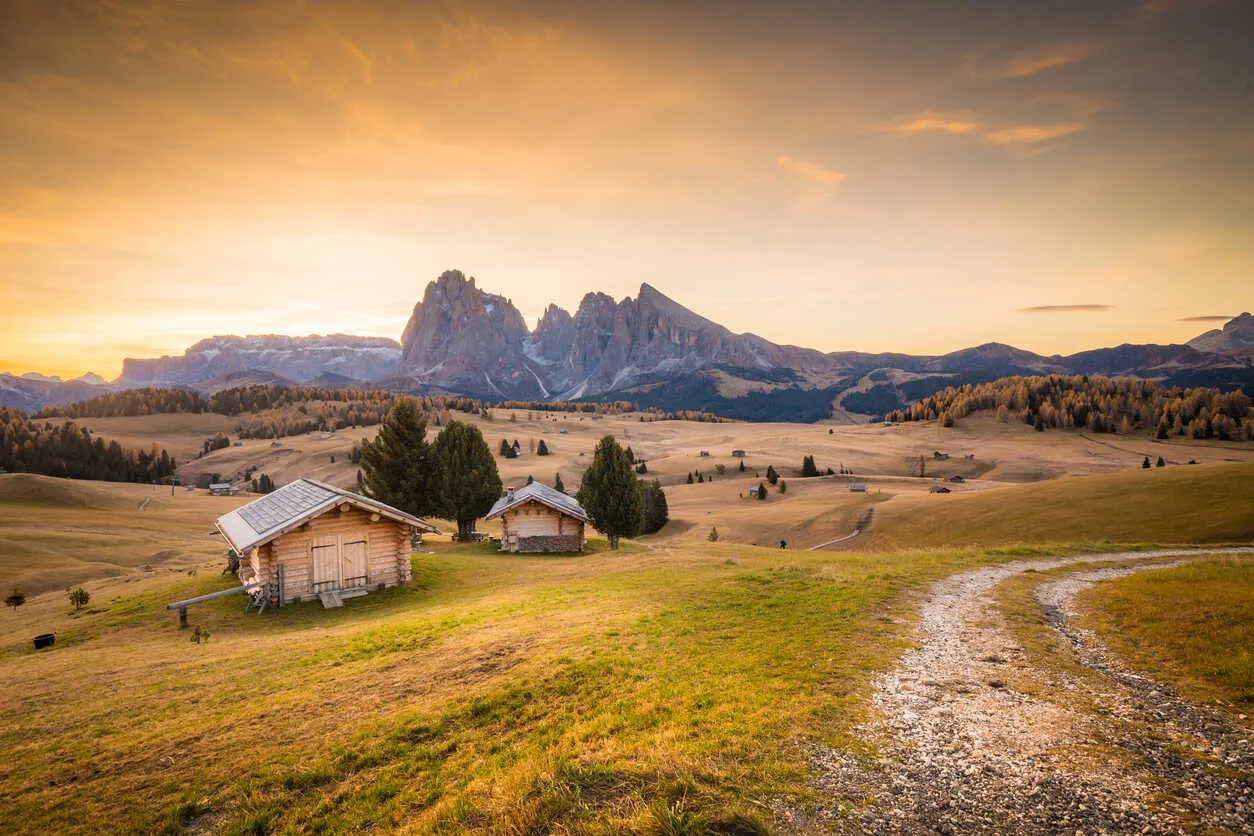
Pilgrimage routes are not the only European walking experiences out there, of course.
Take Lynn Raube and Jeff Behnke, a Pacific Northwest couple nearing retirement who loved two recent hut-to-hut treks through high-altitude, challenging terrain in the Italian Dolomites (one self-guided; one with the tour company Backroads). Their next hut-to-hut self-guided trip is planned for the Haute Route of the Alps, from Chamonix in France to Zermatt in Switzerland.
"With hut-to-hut trips, at the end of the day you have a bed and meals waiting for you in the next accommodation," Lynn tells me. "I love the sense of accomplishment and adventure we get from completing the journey."
Confirmed fitness buffs, the couple relish the challenge of high-altitude trekking and rely on hiking poles (collapsible, lightweight versions fit neatly in checked luggage), quick-drying synthetic fiber clothing, and lots of sunscreen. They savor the opportunity to meet other hikers on the routes and enjoy swapping stories over dinner or along the trail.
Backroads’ six-day, five-night ‘Italian Dolomites Hut-to-Hut Hiking Tour’ includes all breakfasts, five lunches, five dinners, English-speaking guides, baggage transfer, van shuttles as needed, private guided tours at area attractions, gratuities, fares for local transit, and more; starts at $4,100 per person.
Walking Holiday Basics: Costs, Lodging, Difficulty Levels, and More
Our own Basque country tour followed remote trails much of the time, and we rarely encountered other walkers. The tour operators provided us with printed maps and route notes, and we were encouraged to use mapping apps like Pocket Earth (which allows you to download topographic contour maps for offline use out of service range) and compasses if necessary.
All the local Basque farmers and villagers we encountered were friendly, and unlike in our home state of Oregon (where getting lost in the wilderness is a real danger) we were never more than an hour or two from some sort of settlement.
Guided tours eliminate the responsibility of navigating and offer the benefit of local expertise. Participants walk in a group led by an experienced guide and socialize over meals.
Budgets vary depending on location, length of the tour, whether the tour is guided or self-guided, and the types of dining and accommodation on offer. I highly recommend our outfitter, On Foot Holidays, while others (interviewed in this story) recommend Andaspain, Macs Adventure, and Backroads. Some tour operators, such as Road Scholars, also include expert-led lectures and field trips.
Though some tour operators (like Road Scholars) include airfare in their packages, most of the companies I researched do not, and you’ll be expected to get to and from your walking tour starting and ending points. Costs typically include a ‘base rate’ of standard accommodation, some or all meals depending on location, and support from local luggage drivers and ‘fixers’ like our wonderful Basque region advisor Aznar, who quickly responded whenever we reached out. Trips are rated for difficulty level, and many, like ours, offer rides from local hosts to cut mileage or alternative walking routes to circumvent high peaks.
For many trips, you can customize your lodging (which will change the budget considerably) by upgrading from ‘standard’ (usually comfortable, no-frills inn accommodation) to more luxurious options like boutique hotels or renovated castles.
The same goes for food. On our trip, the innkeeper made dinner for us the first night; the second night Aznar reserved a table for us in a local bar; the third night, a three-course meal was included in our accommodation cost at a local hotel/restaurant. The final two nights, we were on our own in the restaurant-studded medieval town of Hondarribia and the foodie paradise of San Sebastián.
The Quiet Magic of Day’s End
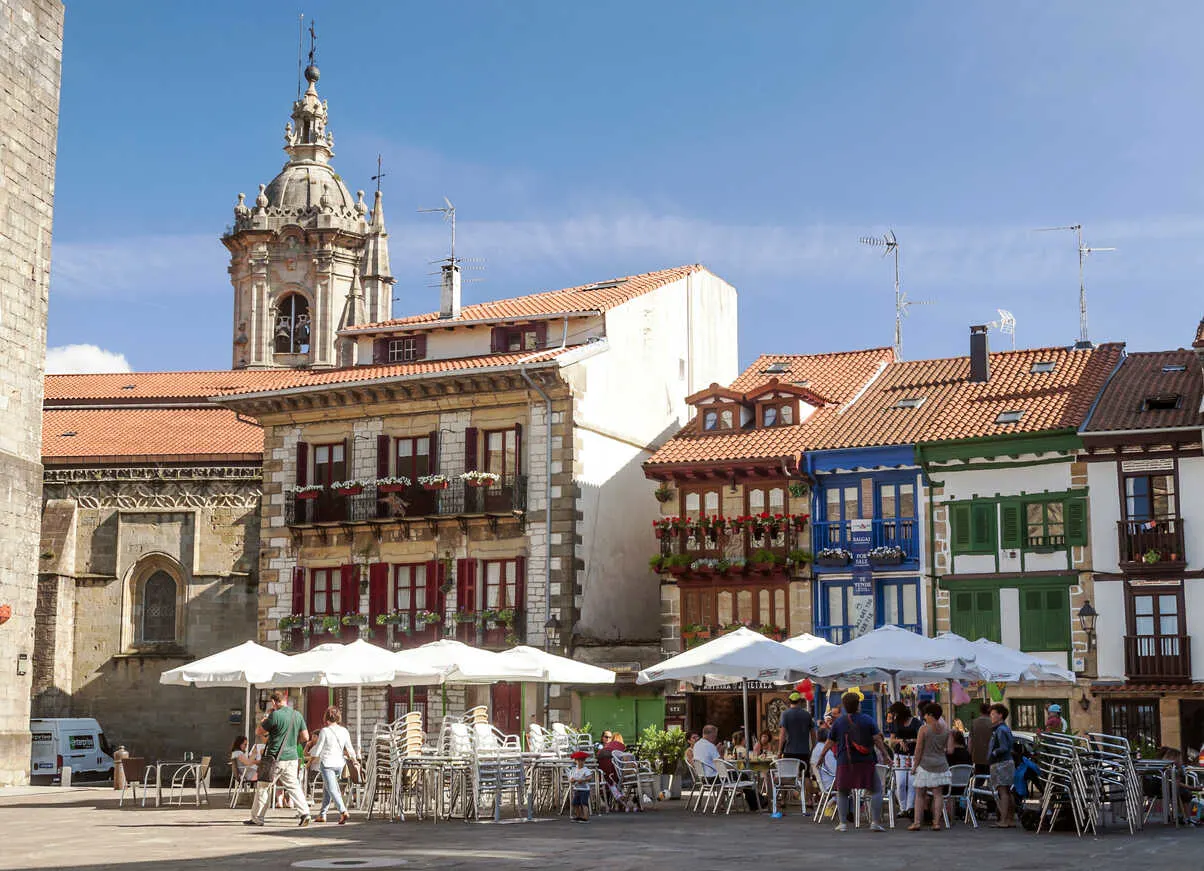
Despite that first blazing hot, sixteen-mile day, our own walking tour had a happy ending. It was dusk when Jon and I finally trudged through the door of Olagaraia, an exquisitely renovated historic guesthouse in the town of Etxalar. After rinsing off the dust of the day in the en-suite shower of our elegantly appointed room, we rested and dressed for dinner in the village square.
The short stroll into town through balmy, grass-scented air felt a bit surreal. For a moment, I wished we had a car. Or a taxi. But the challenges of the day evaporated as we entered Bar Elutsa, a popular gathering spot on the town square, where Aznar had reserved us a table.
Children played in the nearby pelota court (a traditional Basque game), two babies were passed around to admirers in the café, and friends mingled in the streets. Conversations rose and fell around us in both Basque and Spanish. We took in the convivial atmosphere, enjoying chilled local white wine, crisp potato croquettes, fried calamari, and an enormous garden salad with a tangy vinaigrette. We were the only foreigners in the entire town, it seemed, but we felt welcome there.
Walking back to our guesthouse through the quiet night, admiring the canopy of shimmering stars overhead, I felt a sense of accomplishment for having completed the day’s physical challenge, and a tingle of anticipation for what tomorrow would bring.
From that moment on, no matter how steep the trails, how hot the sun, or how exhausted I felt, I was absolutely certain I would complete the journey. The next few days brought glorious views, encounters with adorable semi-feral Basque ponies called Pottoka, one breathless moment when a large snake slithered across the path (a French couple hiking nearby assured us it was harmless), and lodging that ran the gamut from comfortable to palatial. Every evening, we feasted on Atlantic seafood, grilled meats, and local produce.
In the medieval town of Hondarribia, we celebrated our anniversary with a night in the magnificent former castle of Spain’s King Carlos V, Paradores de Hondarribia. We sampled pintxos (the Basque version of tapas) along restaurant-packed San Pedro Kalea street. (At Bar Senra, generously portioned pintxos were $25 for two, wine included.)
In the smaller villages, we ate hearty if simple meals in local bars. Our multicourse menu in the restaurant of the historic Hotel Churrut in Bera offered delicious, classic Basque dishes such as entrecôte of beef with red peppers, baked sea bream with potatoes, and gateau Basque. ($60 for two, wine included.)
And in San Sebastiàn, a gastronomic mecca where we stayed in the simple, comfortable Pension Sarriegi, we went a little crazy with pintxos, eating our way around town one small plate at a time. Our favorite spots: Gandarias (31 de Agosto Kalea, no. 23) and Bar-Restaurante La Cepa (31 de Agosto Kalea, no. 7). ($20-25 for two; wine, cider, or beer included.)
San Sebastiàn is also home to many excellent Gelaterias. After descending the stunning cliffside trail into San Sebastiàn on our last day of walking, we headed straight to Gelateria Boulevard (Alameda del Boulevard, no. 10) for generous scoops of ice cream ($6 for two). The justly famous gateau Basque (locally known as pastel Vasco) at Pasteleria Oiartzun (Ijentea Kalea, no. 2) is not to be missed, either. There’s nothing like starting the day with cafés con leche and pastel Vasco enjoyed at a sunny sidewalk table. ($10 for two coffees and a pastry.)
We’d added an extra day in this lovely, compact seaside city to take advantage of cultural highlights like the fascinating, history-packed San Telmo Museum (and, let’s face it, to eat), and take some time to recharge.
On our last afternoon there, I dipped my toes (blister-free thanks to a light daypack, well-broken-in shoes, and merino wool socks) in the sapphire-blue Atlantic while Jon swam to his heart’s content in San Sebastiàn’s half-moon-shaped bay. We’d walked 53.5 miles in four days, much of it on steep hills, in unseasonably hot fall weather.
Next time, I mused, we could build in a few rest days here and there. We could try the ‘real Camino’— maybe the coastal paths of the Portuguese route. Or keep going from San Sebastiàn all the way along the cliffs to Santiago de Compostela.
A burgeoning sense of confidence made me want to keep traveling this way, experiencing Europe one step at a time rather than from a car window or a seat on a train.
I’m hooked, I realized.
Everyone I interviewed for this story agreed there is something wonderfully addictive about walking tours.
Barely 24 hours after completing our journey, I was already imagining our next walking adventure.
How to Move Out of the U.S.
How to Move Out of the U.S.
In all sorts of beautiful, welcoming, culturally rich, saner places around the world, you can live well from $2,000 a month (all in, housing included). Sign up for our free daily IL Postcards e-letter and we’ll immediately send you a free report on the WORLD’S # 1 RETIREMENT HAVEN— plus 9 more spots you should have on your radar. Each day, you’ll earn about the best places to move to, retire, travel, buy real estate, and enjoy a good life for less, overseas.

By submitting your email address, you will receive a free subscription to IL Postcards, Overseas Dream Home, The Untourist Daily and special offers from International Living and our affiliates. You can unsubscribe at any time, and we encourage you to read more about our Privacy Policy.
Excerpt from Gift of Gold
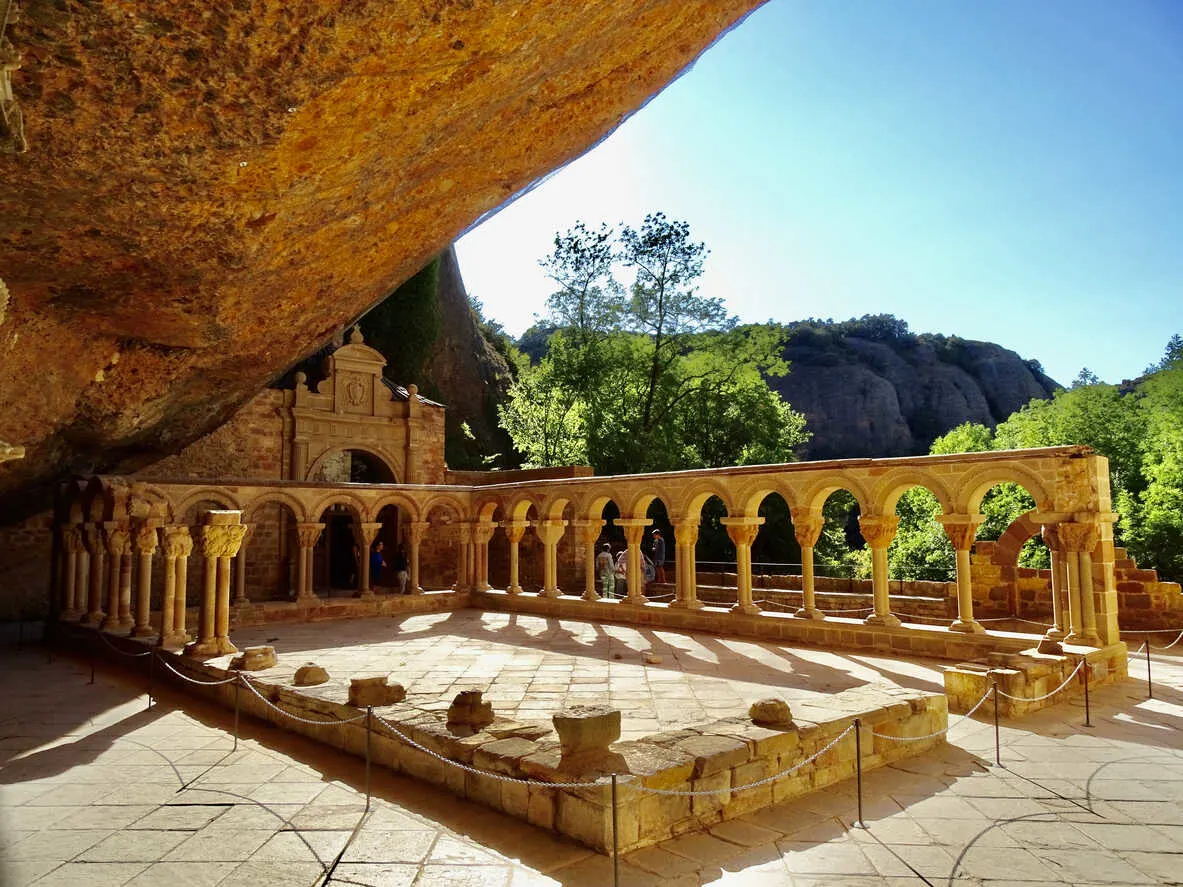
While researching my books, I discovered the San Juan de la Peña monastery was not only an important stop on the Camino de Santiago, but a power player in the local merino wool trade. It was a no-brainer to make San Juan de la Peña the spectacular backdrop to my characters’ dramas, joys, and tragedies.
Here’s a taste:
Ten-year-old Carlo Sacazar followed the monks back to the monastery, trotting to keep up. They entered a stone building with arched windows and soaring ceilings. Simple wooden pallets lined the perimeter of the airy space, most of them occupied by patients covered with rough homespun blankets. It was easy to spot the cause for the monks’ alarm: a man who thrashed wildly on a pallet by the door, his face and neck covered in blood.
Brother Arros entered the building carrying a wooden screen, his face unsmiling, his clear blue eyes sober.
“Bear attack,” he said, arranging the wooden screen next to the pallet. “A pilgrim. He was discovered on the King’s Road by a group of merchants heading south. They were kind enough to transport him here. I’m confident I can staunch the bleeding, and thanks to Maria’s herb recipes I have the right medicines to ease his pain. His skin, though—I don’t know if it can be repaired.” Brother Arros seemed to notice Carlo for the first time. “Young Carlo, this is not the place for you,” he said sternly. “Go find your father.”
Carlo turned and ran as fast as he could to the refectory, where his father was conversing with a group of monks. When Carlo rushed in, he stopped talking in mid-sentence.
“What’s wrong, son?”
“A man was attacked by a bear,” Carlo recounted breathlessly. “A pilgrim.”
Carlo’s father cast a look at the monks, who crossed themselves. “God rest his soul, he will not last the night.”
From Gift of Gold: Miramonde Series Stories, copyright 2019 by Amy Maroney. To download a free e-book of the story collection, click here.
Editor's Note: This article appears in the September 2024 issue of International Living magazine, a monthly publication that showcases the best destinations around the world to live, invest, travel, and retire well… for less. With correspondents based all over the planet, we bring you on-the-ground insights and expert recommendations you won’t find anywhere else--about real estate, health insurance, retirement planning, earning abroad, investing outside the dollar, taxes, visas and second passports, overseas home rentals, and more. Subscribe today with a special offer, here.
